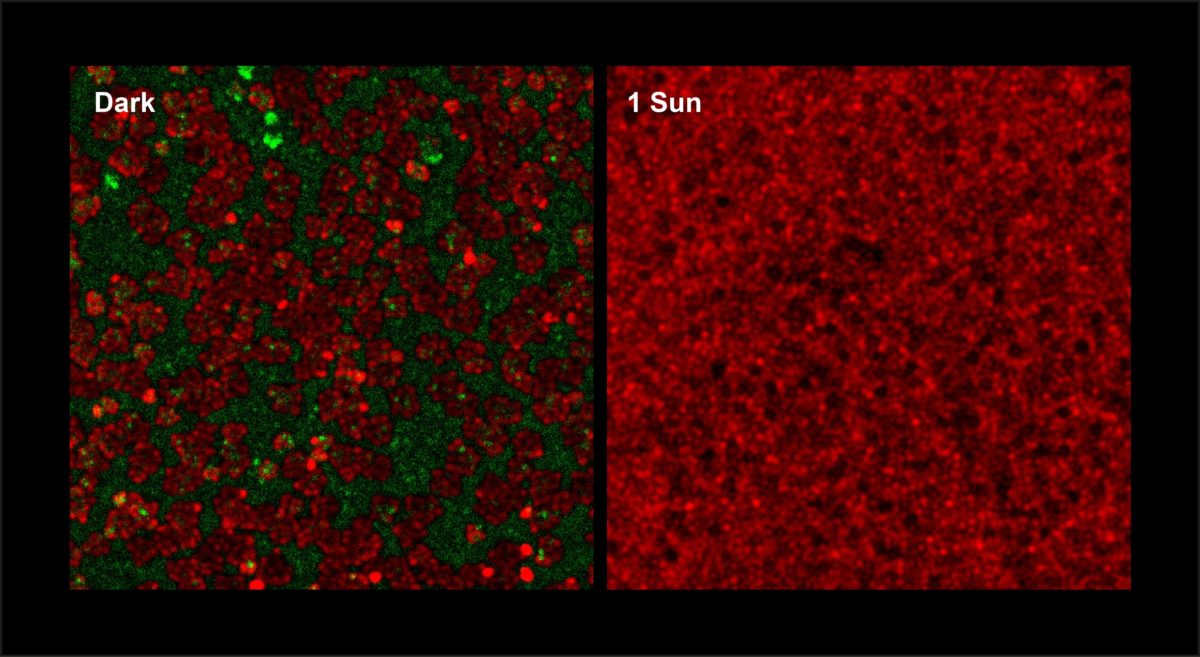Research carried out by the laboratory of renowned PV scientist Michael Grätzel looked at the effect of light on two of the most common processes for perovskite film deposition, finding that controlling the presence of light had significant effects on the formation of perovskite crystals in both methods.
The research, published by PhD student Amita Ummadisingu, uses microscopic techniques to examine the effect of direct light on crystal formation in layered perovskite deposition.
In the first process, known as sequential deposition, lead iodide is deposited onto a titanium dioxide scaffold, then dipped to make the final solution of methylammonium lead iodide perovskite. With this method, research showed formation of perovskite was accelerated when light is present.
The second process, whereby a precursor solution is coated onto a spinning flat base, and then an anti-solvent is dripped on, and the sample is heated to form the perovskite, exhibited better results in dark conditions.
“Surprisingly and strikingly we find that light strongly affects the rate of formation and the morphology of perovskites in conventional methods used, where no light effects have been remarked before,” says Michael Grätzel.
“Light is a major factor in the deposition methods for many perovskite composition methods, adds Amita Ummadisingu. “Awareness and control of the light effect is crucial, and should always be considered when preparing perovskite films for applications such as solar cells, LEDs etc.”
Much of the previous research into perovskite solar cells has focused on boosting efficiency through optimizing cell architecture and production processes. While several companies and institutes are working on commercial applications for the material, but have been slowed by issues with durability and reliability in the cells. By improving understanding of the reactions used in perovskite formation, says EPFL, this latest research can assist in improving reproducibility, and scaling up perovskite production.
This content is protected by copyright and may not be reused. If you want to cooperate with us and would like to reuse some of our content, please contact: editors@pv-magazine.com.




By submitting this form you agree to pv magazine using your data for the purposes of publishing your comment.
Your personal data will only be disclosed or otherwise transmitted to third parties for the purposes of spam filtering or if this is necessary for technical maintenance of the website. Any other transfer to third parties will not take place unless this is justified on the basis of applicable data protection regulations or if pv magazine is legally obliged to do so.
You may revoke this consent at any time with effect for the future, in which case your personal data will be deleted immediately. Otherwise, your data will be deleted if pv magazine has processed your request or the purpose of data storage is fulfilled.
Further information on data privacy can be found in our Data Protection Policy.